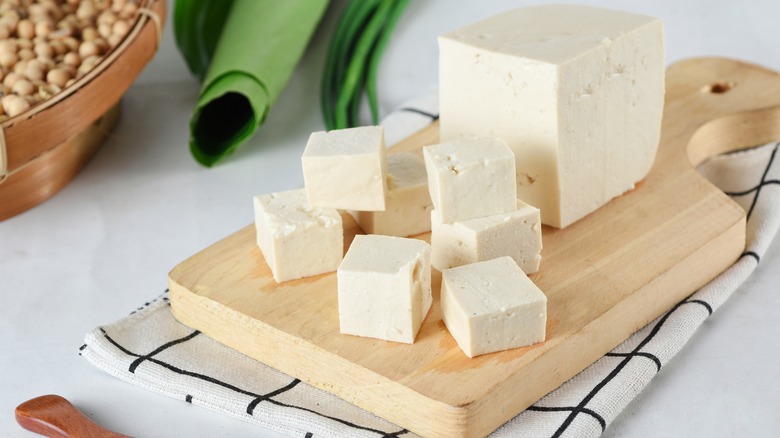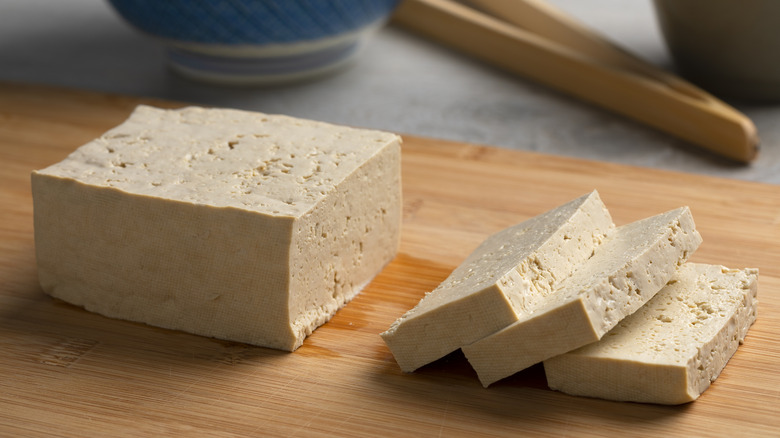The Tofu Pressing Mistake You Don't Want To Make
Tofu may be a well-known vegan or vegetarian staple that's commonly cooked and served as a meat substitute, however, this soy milk product is underestimated as a unique ingredient in its own right. Tofu isn't only reserved for vegan diets. It's a versatile and nutritious staple you can add to a wide range of meals. But if you're a novice in preparing it, don't be surprised when you encounter some challenges. One of the common mistakes to avoid when pressing tofu is doing it while it's still cold from the fridge or freezer.
Granted, it's unlikely that anyone would pop a rock-solid frozen tofu in a press, but the critical point is to ensure it's completely thawed and has come to room temperature before applying any pressure. Frozen tofu generally has a firmer, less pliable texture, which would make pressing it unnecessarily harder. However, once it warms up to room temperature and all the ice crystals have melted, pressing it becomes much easier. In fact, squeezing a pre-frozen block of tofu releases more liquid than one that wasn't initially frozen, leading to a firmer end product that's perfect for preparing your favorite tofu recipes.
More reasons to freeze and thaw your tofu
In addition to making pressing easier, freezing and thawing also enhances tofu's ability to absorb flavors. You may have heard that tofu is like a sponge that just sucks in flavors. This is especially true when it comes to pre-frozen tofu because of the many tiny holes that are created during that process. When something is frozen, any water content in it expands as it changes from liquid to solid state. This is what happens to tofu during freezing. As a result, when it's thawed and the ice crystals melt, you're left with a block of tofu that has several pockets where the expanded ice crystals were located.
This network of spaces serves as a channel through which tofu can absorb marinades, stocks, or sauces. Moreover, compared to fresh tofu, the thawed version soaks up flavors not just on the surface but right into the inner structure. Finally, the numerous tiny holes result in a more textured tofu that has a delightful bite to it. This change is more prominent when you freeze the silken type of tofu because of its higher water content. However, the difference will also be noticeable with firm tofu.

